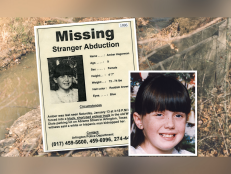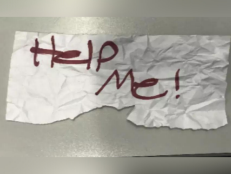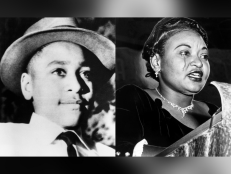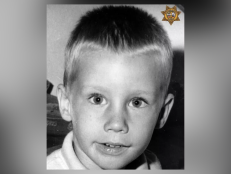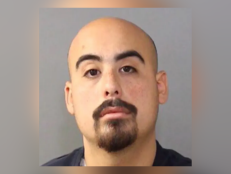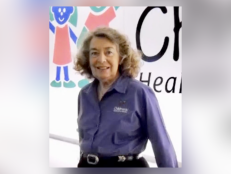5 Things You Need To Know About The Conviction & Execution Of Cameron Todd Willingham
Willingham always said he never set the fire that killed his three daughters, and years after his death, supporters continue to work to clear his name.
![Mug shots of Cameron Todd Willingham [Texas Department of Criminal Justice]](http://investigationdiscovery.sndimg.com/content/dam/images/investigationdiscovery/crimefeed/legacy/2019/05/cameron-todd-willingham-texas-dept-of-corrections-5142019.jpg.rend.hgtvcom.616.347.suffix/1557853503768.jpeg)
Mug shots of Cameron Todd Willingham [Texas Department of Criminal Justice]
On February 17, 2004, the State of Texas executed Cameron Todd Willingham for triple homicide, specifically regarding a 1991 fire that killed his three daughters.
Prosecutors had successfully argued that Willingham had set the blaze intentionally to cover up child abuse.
Controversy surrounded the case early on, but it has since grown more intense in the wake of Willingham’s death by lethal injection. Expert testimony, multimedia analysis, an acclaimed work of investigative journalism, an award-winning documentary, and a dramatic Hollywood film have all argued that Texas authorities may have gotten their decision wrong.
To date, Texas stands by its decision and has stated it will offer no posthumous pardon to Willingham. Here are five crucial facts about the case.
1. The Fire That Started — & Ended — It All
![Aftermath of the fire [Texas State Fire Marshal's Office]](http://investigationdiscovery.sndimg.com/content/dam/images/investigationdiscovery/crimefeed/legacy/2019/05/Texas-State-Fire-Marshals-Office-Aftermath-of-Fire-S5142019.jpeg.rend.hgtvcom.616.411.suffix/1557854820848.jpeg)
Aftermath of the fire [Texas State Fire Marshal's Office]
On December 23, 1991, fire gutted the home where Cameron Todd Willingham, then 23, lived with his wife, Stacy Kuykendall, and the couple’s three daughters: two-year-old Amber Kuykendall and one-year-old twins Karmon Willingham and Kameron Willingham.
Willingham escaped the blaze with minor injuries. His wife had been out shopping for Christmas presents at the time. The three children, tragically, perished in the inferno.
The State Fire Marshall’s Office concluded that the fire was caused by arson, citing evidence that a liquid accelerant was used to make it burn fast and hot. Police arrested Willingham for murder.
Prosecutors alleged he set the fire to cover up evidence of child abuse — despite no evidence of previous child abuse ever having been reported.
Willingham did, however, have a history of domestic violence and run-ins with the law. John Jackson, the prosecutor who sent Willingham to Death Row, later told PBS: “He was an individual with essentially no redeeming value. This was his crowning achievement as a psychopath: the murder of his three children.” [Chicago Tribune]
2. Willingham Was Convicted & Sentenced To Die After Controversial Testimony — Some Of Which Changed Or Was Later Recanted
During Willingham’s trial, some eyewitnesses claimed that Willingham had tried to save the children, while others said he just sat and watched the fire burn. A local police chaplain first said Willingham was absolutely distraught over the fire, but later said he seemed to be hiding something.
After Texas forensics experts presented evidence of arson, the most powerful testimony came from Johnny Webb, a prison inmate who claimed Willingham had confessed setting the fire to him. Webb said Willingham told him he intended the blaze to cover up an injury inflicted on one of the girls by his wife. None of the girls’ remains, however, displayed any signs of abuse.
In 2014, Webb recanted his testimony, saying he'd agreed to say what John Jackson wanted him to in exchange for reduced prison time.
The New York Times presented what it claimed was evidence to The Innocence Project that such a deal had been in play. Three years later, Jackson was tried for misconduct regarding this alleged deal, and he was acquitted. [The Marshall Project]
3. Prosecutors Called Expert Witnesses To Testify That Willingham May Have Been A Satanist & Was An Irredeemable Psychopath; One Such Witness Was Later Expelled By The American Psychiatric Association
During the penalty phase of the trial, Jackson called a witness to testify that Willingham’s skull tattoos and heavy metal music posters indicated he may have been a violent Satan worshipper.
Tim Gregory, a psychologist who had once gone hunting with Jackson, examined photographs of Willingham’s wall hangings and told the court, “All of these are in fire, depicting — it reminds me of something like Hell. And there’s a picture — a Led Zeppelin picture of a falling angel. I see there’s an association many times with ‘cultive’-type of activities. A focus on death, dying. Many times individuals that have a lot of this type of art have interest in Satanic-type activities.”
Dr. James Grigson, a psychiatrist nicknamed “Dr. Death” for his testimony preceding suspects being sentenced to capital punishment, stated in court that Williamson was “an extremely severe psychopath” that “no pill” could help.
Three years later, the American Psychiatric Association expelled Dr. Grigson for violating ethics, stating that he repeatedly made a “psychiatric diagnosis without first having examined the individuals in question, and for indicating, while testifying in court as an expert witness, that he could predict with 100-percent certainty that the individuals would engage in future violent acts.” [The New Yorker]
4. Days Before The Execution, Willingham’s Lawyers Presented A Report That They Say Proved The Fire Was Unintentional — Authorities Allegedly Ignored It
After numerous other fire departments and investigators questioned the evidence for arson, Dr. Gerald Hurst, a world-famous forensic scientist and fire authority, set out to create a definitive final report.
To assemble the report, Hurst said he conducted and recorded an experiment for each piece of evidence that had originally been presented. He then presented his findings, which he said systematically proved each original conclusion wrong. Hurst’s final ruling was, “Todd Willingham's case falls into that category where there is not one iota of evidence that the fire was arson. Fundamentally, this was a classic accidental fire.”
On February 14, 2004, Willingham’s lawyers presented Dr. Hurst’s report to the Texas Board of Pardons and Paroles, as well as to Texas governor Rick Perry. Neither office responded.
In 2009, following renewed public interest in the case, Perry said, “Willingham was a monster. He was a guy who murdered his three children, who tried to beat his wife into an abortion so that he wouldn't have those kids. Person after person has stood up and testified to facts of this case that quite frankly you all aren't covering.” [PBS]
5. High-Profile Projects Continue To Argue On Behalf Of Willingham’s Innocence
In 2006, The Innocence Project took up the cause of clearing Willingham’s name.
Three years later, The New Yorker published “Trial by Fire” by David Grann, a 16,000-word investigation into the case that argued Willingham was wrongly convicted.
Death by Fire, an investigative documentary, aired in 2010 as part of the PBS Frontline series, showcasing the work of writer Elizabeth Gilbert, who had worked to reverse Willingham’s conviction while he was alive.
The theatrically released documentary Incendiary: The Willingham Case (2011) won acclaim and impacted public opinion.
Trial by Fire (2019), a dramatic film starring Jack O’Connor and Laura Dern and based on the New Yorker piece, further publicized the movement to reverse Willingham’s conviction. [Cameron Todd Willingham Official Site]
